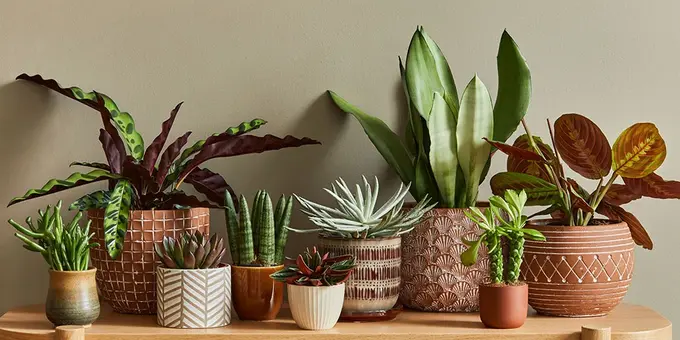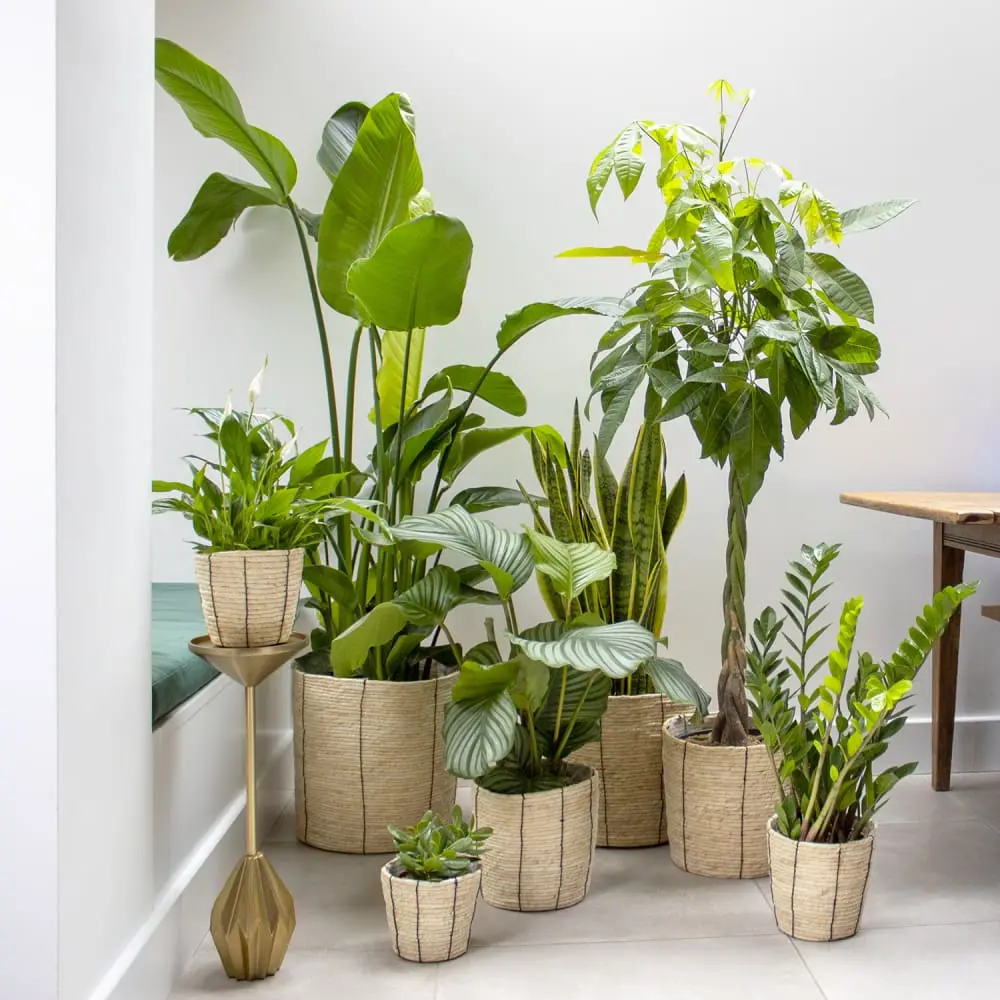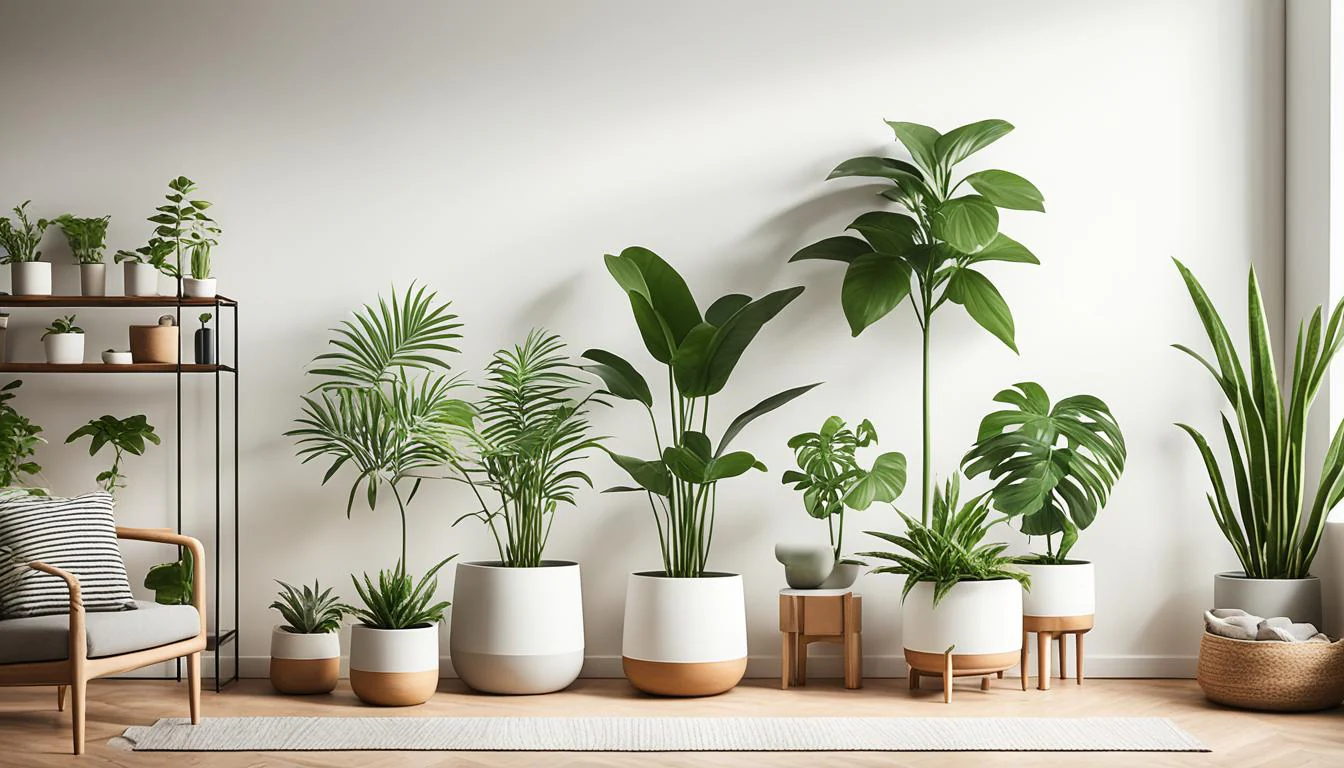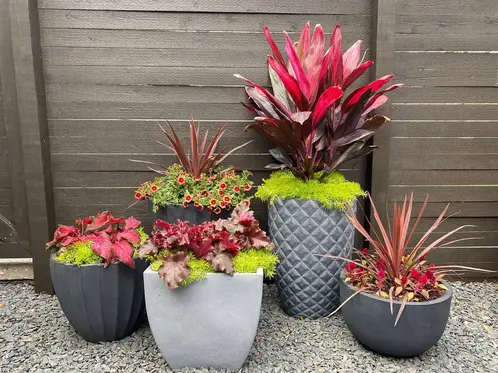Contents
Introduction
Welcome to the world of indoor container gardening! If you’ve ever admired those lush, vibrant plant displays in stylish homes and wondered how you could create something similar, you’re in the right place. Combining containers for a beautiful indoor garden display is not just for green thumbs; it’s a fun and creative way to bring some nature into your living space, no matter how big or small your home is.
So, why should you consider starting an indoor garden? For starters, it’s a fantastic way to brighten up your space. Indoor plants can transform a dull corner or an empty shelf into a lively focal point. Plus, gardening indoors means you get to enjoy the benefits of plants year-round, regardless of the weather outside. Imagine having fresh greenery and colorful blooms right at your fingertips, all without needing a sprawling backyard.
Now, let’s get to the exciting part—combining different containers to create a stunning display. You might think that choosing the right pots is just about picking something pretty, but there’s actually a lot more to it. The right combination of containers can make your plants stand out, create a cohesive look, and even make caring for your plants easier.
In this guide, we’ll walk you through everything you need to know to create your perfect indoor garden. We’ll cover the basics of container types and sizes, help you select the best plants for your space, and show you how to arrange everything for maximum visual impact. Whether you’re a seasoned plant lover or a newbie just getting started, you’ll find tips and tricks to help you create a beautiful indoor garden that reflects your personal style.
Ready to dive in? Let’s explore how you can turn your indoor spaces into a lush, green paradise with just a bit of creativity and the right containers.
Understanding Container Types
Alright, let’s get down to the nitty-gritty of indoor container gardening! Before we dive into planting, it’s essential to understand the different types of containers you can use. This isn’t just about picking what looks nice; the right container can make a huge difference in how your plants grow and how your space looks. Don’t worry, we’ll keep it simple and straightforward!

Material Options
First up, let’s chat about the materials containers are made from. There’s a bunch of choices out there, and each has its own perks and quirks.
- Clay and Terracotta
These classic choices are great if you love a natural, earthy look. Clay and terracotta pots are fantastic for keeping soil aerated and allowing excess moisture to evaporate. However, they can be a bit heavy and dry out faster, so they’re best for plants that like a drier environment. Plus, they can be a bit fragile, so handle them with care. - Plastic and Resin
If you’re looking for lightweight and low-maintenance, plastic and resin containers are your go-tos. They’re easy to move around and hold onto moisture well, which means you don’t have to water your plants as often. The downside? They might not have the same natural charm as clay pots and can sometimes look a bit basic. - Metal
Metal containers offer a sleek, modern look and are incredibly sturdy. They’re great for a contemporary style but keep in mind that they can heat up quickly if placed in direct sunlight, which might affect your plants. Also, they require good drainage, so make sure your metal pots have holes at the bottom. - Ceramic
Ceramic pots come in all sorts of beautiful designs and colors, making them perfect if you want to add a splash of personality to your garden. They can be heavier and more fragile, but they’re excellent for plants that enjoy a bit of extra weight and stability. - Wood
Wooden containers bring a rustic, cozy feel to any indoor garden. They’re customizable and can be made to fit any space. Just remember to seal them properly to prevent water damage and rot. They might need a bit more maintenance, but the natural look is worth it!
Size and Shape Considerations
Now that you’ve got a handle on materials, let’s talk sizes and shapes. The size and shape of your container can really influence your garden’s look and feel.
- Small Pots
Perfect for little plants, herbs, or succulents. Small pots are great for adding a touch of greenery without taking up too much space. - Medium Pots
Ideal for medium-sized plants or creating small groupings. They offer a bit more room for growth and can be used to mix and match different plants. - Large Pots
If you want to make a bold statement, large pots are the way to go. They’re great for big plants or creating a focal point in your indoor garden. - Shapes
Round, square, hanging, or wall-mounted—containers come in all shapes. Round pots are classic, while square ones can create a more modern look. Hanging and wall-mounted pots are fantastic if you’re short on floor space but still want a lush garden.
In essence, choosing the right container is about balancing aesthetics with practicality. By picking the right materials, sizes, and shapes, you can create a stunning indoor garden that not only looks great but also gives your plants the best environment to thrive.
Choosing Plants for Your Display
Alright, let’s dive into the fun part—choosing the plants for your indoor garden! Picking the right plants is like selecting the stars of your show. The right mix will not only brighten up your space but also create a harmonious and beautiful display. Here’s a simple guide to help you choose plants that will thrive and look amazing in your indoor garden.

Plant Types and Their Compatibility
When it comes to indoor plants, there’s a huge variety to choose from. Let’s break down some popular options and what makes them special.
- Foliage Plants
If you’re into lush, green looks, foliage plants are a fantastic choice. Think ferns and ivy—they’re great for adding a rich texture and a touch of nature. These plants are perfect for creating a dense, green backdrop. They usually prefer indirect light and regular watering. - Flowering Plants
Want to add some color to your space? Flowering plants like orchids and peace lilies can bring vibrant hues and charming blooms to your indoor garden. They can make a real statement and are ideal for spots where you want to draw attention. Keep in mind that they often need a bit more light and care to keep those flowers looking their best. - Succulents and Cacti
For a touch of the exotic and a lot of low-maintenance charm, succulents and cacti are perfect. Aloe vera and jade plants are great examples. These hardy plants store water in their leaves, so they don’t need frequent watering and are perfect for beginners. They love bright, direct light and are very forgiving if you forget to water them occasionally. - Herbs and Edibles
Why not add some functionality to your decor with herbs like basil and mint? Not only do they look great, but they also provide fresh flavors for your cooking. Herbs are usually pretty easy to care for and love bright, sunny spots.
Growth Requirements
Each plant has its own preferences when it comes to light, water, and temperature. Here’s a quick rundown to help you match plants with your indoor environment:
- Light Needs
Some plants thrive in bright, direct light, while others prefer a bit of shade. Make sure to choose plants that match the light conditions of your space. For example, succulents love bright, sunny spots, whereas ferns do better in lower light. - Watering Needs
Different plants have different watering schedules. Succulents and cacti need very little water, while flowering plants often require more frequent watering. Consider how much time you want to spend watering and choose plants that fit your schedule. - Temperature and Humidity
Most indoor plants prefer a stable temperature and moderate humidity. If your home is very dry or has drastic temperature changes, you might need to choose plants that can tolerate those conditions or make adjustments to your environment.
In summary, selecting plants for your indoor garden is about finding the right balance between beauty and practicality. By understanding the types of plants that work best in your space and matching their needs with your home’s conditions, you can create a thriving, vibrant indoor garden that’s both lovely and low-maintenance.
Creating Visual Harmony
Let’s talk about making your indoor garden look as stunning as possible! Creating visual harmony is all about how you combine and arrange your containers and plants to create a cohesive, eye-catching display. It’s like setting up a beautiful stage where every element has its moment to shine. Here’s how you can pull it all together for a garden that looks effortlessly stylish.

Color Coordination
Color is a powerful tool when it comes to designing your indoor garden. Here’s how you can use it to make your plants and containers really pop.
- Matching and Complementing Colors
Think about how the colors of your containers and plants work together. You might want to match the colors of your pots to the hues of your plants or go for complementary colors to create a striking contrast. For instance, a deep green plant looks great in a neutral pot, while vibrant flowering plants can add a splash of color against a more subdued container. - Using Color to Define Space
Color isn’t just about looks—it can help define different areas of your indoor garden. Use containers in different shades to create distinct zones or highlight specific plants. This technique can make your space feel more organized and visually appealing.
Height and Texture Variation
Mixing up heights and textures can add depth and interest to your indoor garden. Here’s how to do it:
- Layering and Staggering Heights
Arrange your containers at various heights to create a dynamic display. You can use plant stands, shelves, or even stack pots to achieve this. By placing some plants higher and others lower, you’ll create a sense of movement and dimension in your garden. - Mixing Textures
Combining different textures can make your garden look richer and more engaging. For example, pair smooth ceramic pots with rough wooden containers, or blend leafy ferns with spiky succulents. This contrast in textures adds visual interest and makes each plant stand out.
Grouping Techniques
How you group your containers can make a huge difference in the overall look of your indoor garden. Here’s how to create a cohesive arrangement:
- Cluster Arrangements
Grouping containers together can create a more unified look. Try arranging plants in clusters of three or five for a balanced, pleasing display. You can mix different types of plants and containers within these clusters to keep things interesting. - Creating a Focal Point
A focal point draws the eye and adds emphasis to your display. Choose a standout container or a particularly striking plant to serve as the centerpiece of your arrangement. This can be a large, colorful pot or a unique plant that catches attention.
In summary, creating visual harmony in your indoor garden involves playing with colors, heights, and textures to craft a display that feels both organized and lively. By thoughtfully arranging your containers and plants, you’ll achieve a garden that’s not only beautiful but also harmonious and inviting.
Practical Tips for Display and Maintenance
Let’s get practical! Once you’ve picked out your containers and plants, it’s time to think about how to set up and care for your indoor garden. These tips will help ensure your plants thrive and your garden looks fantastic with minimal effort.
Arranging Containers
How you arrange your containers can make a big difference in how your garden looks and functions. Here’s how to make the most of your space:
- Furniture and Shelving
Using furniture and shelves is a smart way to display your plants and keep them organized. Plant stands and shelving units can help you create layers and add height, which makes your garden look more dynamic. Plus, they keep plants off the floor and away from pets or kids who might knock them over. - Floors and Windowsills
Don’t forget about the floor and windowsills! Placing plants on the floor can add a lush touch to larger spaces, while windowsills are perfect for smaller pots and sun-loving plants. Arrange plants in groups on these surfaces to create a cohesive look and make sure each plant gets the light it needs. - Vertical Gardening
If you’re short on floor space, vertical gardening is a great solution. Hanging pots or wall-mounted planters can add greenery without taking up too much room. They also create a striking visual effect and are perfect for adding greenery to bare walls.
Watering and Feeding
Keeping your plants well-watered and fed is key to their health and appearance. Here’s how to manage it efficiently:
- Watering Schedule
Develop a watering routine that fits the needs of your plants. Some plants need a lot of water, while others prefer to dry out between waterings. Use a calendar or a reminder app to help you keep track. Consider investing in self-watering pots if you’re prone to forgetting. - Fertilizing
Plants need nutrients to grow strong and healthy, so don’t forget to fertilize. Different plants have different feeding needs, so choose a fertilizer that matches your plant types. Generally, feeding every 4-6 weeks during the growing season is a good rule of thumb. Be sure not to over-fertilize, as this can harm your plants.
Pest and Disease Management
Keeping your indoor garden free of pests and diseases is crucial for maintaining its beauty. Here’s how to manage these issues:
- Common Indoor Plant Pests
Watch out for pests like spider mites, aphids, and mealybugs. Regularly inspect your plants for any signs of these critters. If you spot any, treat them promptly with insecticidal soap or natural remedies like neem oil. Keeping plants clean and free from dead leaves can also help prevent infestations. - Preventing Diseases
To prevent plant diseases, ensure your plants have good air circulation and avoid overwatering, which can lead to root rot and mold. Use well-draining soil and pots with drainage holes to keep the roots healthy. If you notice any unusual spots or growths, act quickly to identify and address the problem.
In summary, arranging your containers thoughtfully and maintaining a regular care routine will help your indoor garden flourish. By using furniture and shelves for display, sticking to a watering and feeding schedule, and keeping an eye out for pests and diseases, you can enjoy a vibrant and thriving indoor garden with ease.
Inspirational Ideas and Examples
Now that you’ve got the basics down, it’s time to get inspired! Seeing real-life examples and creative ideas can spark your imagination and help you design an indoor garden that’s uniquely yours. Whether you’re looking for a stunning setup or just a few cool DIY ideas, here’s a collection of inspiration to get your creative juices flowing.
Case Studies and Photos
- Successful Indoor Garden Displays
Check out some beautiful examples of indoor garden displays to see how different elements come together. You’ll find everything from sleek, modern setups with minimalist containers to lush, eclectic arrangements with a mix of plant types and pot styles. Notice how these displays use color, height, and texture to create visual interest and balance. These examples can give you ideas on how to incorporate similar techniques into your own space. - DIY Projects
If you love a good DIY project, there are plenty of creative ways to customize your indoor garden. Consider making your own planters from items like old crates, jars, or even concrete. You can also personalize standard pots with paint or decorative elements to match your home’s style. DIY projects not only save money but also allow you to add a personal touch to your garden.
Seasonal Considerations
Your indoor garden can look amazing all year round with a few seasonal tweaks. Here’s how to adjust your display to fit the seasons:
- Spring and Summer
During the warmer months, go for vibrant, flowering plants and fresh, green foliage. Spring and summer are great times to add bright, colorful containers and mix in some new plant varieties. Consider incorporating herbs and edibles that can thrive in the increased light and warmer temperatures. - Fall and Winter
As the days get shorter and cooler, you might want to focus on plants that can handle lower light levels. Choose hardy, evergreen plants or indoor varieties that can adapt to the seasonal changes. You can also switch to warmer-toned containers and add cozy, decorative elements like small lights or festive accents to keep your indoor garden feeling inviting and cheerful.
In summary, drawing inspiration from successful indoor garden displays and exploring DIY projects can help you create a unique and beautiful garden. By considering seasonal changes and adapting your display accordingly, you’ll ensure that your indoor garden remains a vibrant and delightful part of your home all year round.
Conclusion
You’ve made it to the end of our guide on combining containers for a beautiful indoor garden display—congratulations! Now that you’re equipped with all the knowledge and tips, it’s time to put everything into action and create your own indoor garden paradise.
Recap of Key Points
Let’s quickly recap what we’ve covered. We started by understanding the different types of containers and how each material, size, and shape can impact your garden’s look and functionality. Then, we explored how to choose the right plants based on their type, growth requirements, and how they fit with your space. We moved on to creating visual harmony by playing with color coordination, height, and texture, and grouping techniques. Finally, we looked at practical tips for arranging, watering, feeding, and managing pests and diseases, along with some inspirational ideas to spark your creativity.
Encouragement to Experiment
The beauty of indoor gardening is that there are no hard and fast rules—just lots of opportunities to get creative and make your space uniquely yours. Don’t be afraid to experiment with different plant combinations, container styles, and arrangements. Try out new ideas and see what works best for your home. It’s all about finding what you love and creating a space that brings you joy.
Call to Action
Now it’s your turn! Share your indoor garden setups or any cool ideas you’ve come up with. Feel free to ask questions or seek advice if you need more guidance. Whether you’re starting from scratch or just looking to refresh your current display, the possibilities are endless. Dive in, get your hands dirty, and enjoy the process of turning your indoor space into a green oasis.
Thanks for joining us on this indoor gardening adventure. Happy planting, and here’s to creating a stunning garden that brightens up your home and your day!



